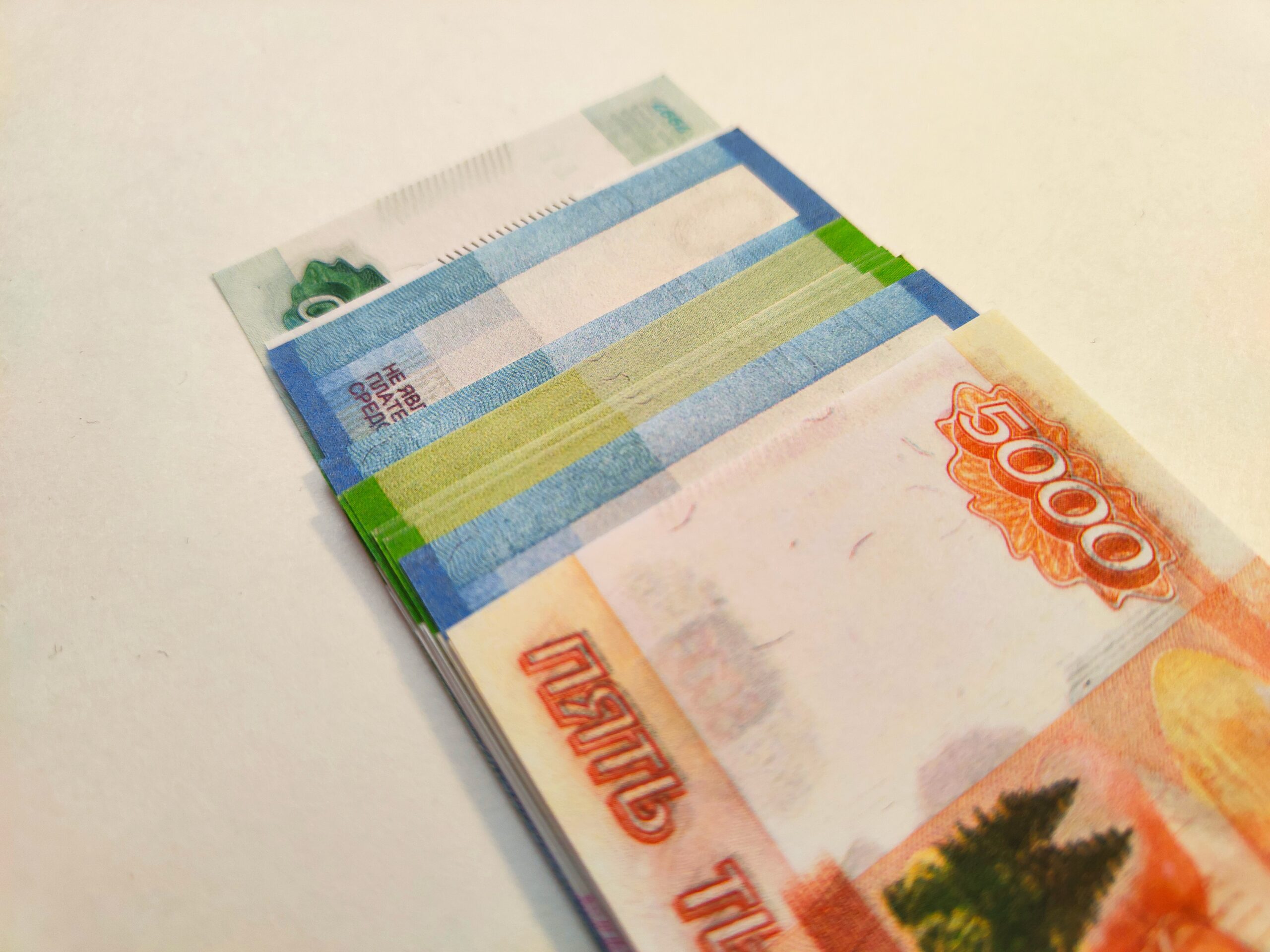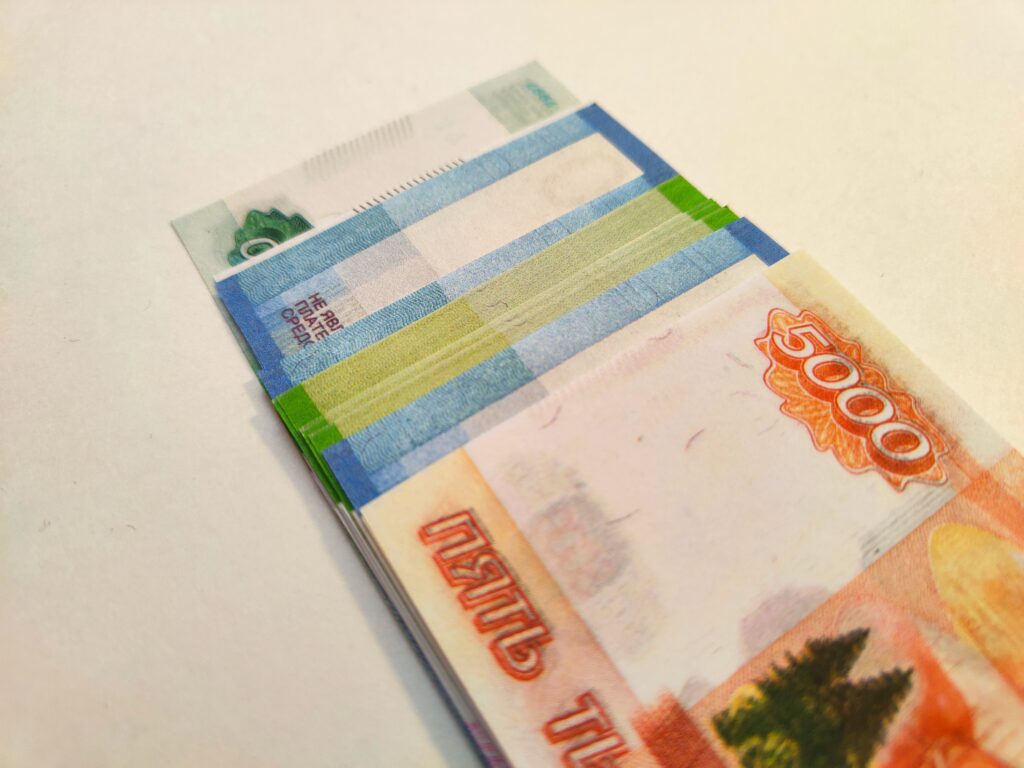

08.05.2023 – Ukraine’s counteroffensive against the Russian invaders is probably imminent. When and where it will run depends primarily on the hoped-for early summer and the end of the “Rasputitsa” mud and rain season. If Ukraine is successful, it is likely to have a huge impact on Russian politics. And on the economy of the Russian Federation – as well as on the ruble.
Probably no asset is as politically driven as the ruble. The weekly chart is erratic – after the invasion began, traders had to put down nearly 150 rubles for a dollar in a selling panic and flight of capital from Russia. Shortly after, it was barely 30 rubles. With a lot of imagination – apart from the breakout in May 2022 – the formation of a cup-with-handle formation can be read out. That is, first a round bottom is formed before USDRUB pulls up to the edge of the cup. That would be again at just under 150. After that, according to the teachings of chart analysis, a sideways formation would be announced for a while, that is the handle. Before the ruble then finally collapses, that is, before the chart takes off to the top.

Source: Bernstein Bank GmbH
Whether this observation is correct, whether it comes so far and whether this happens in the indicated time frame, is completely open. There is, of course, a lot of interpretation involved here. And of course, everything can also turn out completely differently. But we don’t want you to say afterwards that we should have warned you after all.
However, if the ruble really does slide, it will be due to politics. Just like on the front, we may currently be experiencing the calm before the storm in the forex market. The most likely reason for a collapse of the Russian currency would be a regime change. Probably accompanied by turmoil, possibly a coup and an economic shock, just like in the nineties when inflation galloped. If it all comes back, it is most likely to be triggered by a Ukraine victory.
Astonishing strength
First, let’s look back. According to Capital.com, the ruble had been one of the strongest foreign currencies in the world last year. The almost unbelievable resistance right after the start of the invasion was due to five factors: First, there were capital controls. Second, the central bank sold foreign exchange reserves and intervened. Third, Western sanctions took hold – exports to Russia collapsed, so Russians could no longer sell rubles and buy dollars and euros. Fourth, Russia still exported a lot of oil and gas, although not to the West, but mainly to India and China. Fifth, the Russian Central Bank raised the key interest rate from 9.5 to 20 percent immediately after the invasion.
The ruble paradox
In the meantime, the Russian central bank has even had to cut interest rates to 7.5 percent and loosen capital controls because, paradoxically, the ruble had become too strong despite the sanctions, as analysts at Trading Economics recently noted. However, revenues from energy exports have recently been below budget targets and the Finance Ministry has sold foreign exchange reserves for the fourth month in a row, according to the experts.
Our conclusion: If we experience a political worst-case scenario, a new massive capital flight is likely to be in the offing. When the situation eventually calms down and the senseless war ends, the Western economy will return. Then the ruble should be in strong demand again, because euros and dollars will then be invested in the country and exchanged for rubles. Just like in the early 2000s, when a dollar cost only 20 to 20 rubles. So keep an eye on the realtime news – Bernstein Bank wishes successful trades and investments!
____________________________________________________________________________________________
The content of this publication is for general information purposes only. In this context, it is neither an individual investment recommendation or advice nor an offer to purchase or sell securities or other financial products. The content in question and all the information contained therein do not in any way replace individual investor- or investment-oriented advice. No reliable forecast or indication for the future is possible with respect to any presentation or information on the present or past performance of the relevant underlying assets. All information and data presented in this publication are based on reliable sources. However, Bernstein Bank does not guarantee that the information and data contained in this publication is up-to-date, correct and complete. Securities traded on the financial markets are subject to price fluctuations. A contract for difference (CFD) is also a financial instrument with leverage effect. Against this backdrop, CFD trading involves a high risk up to the point of total loss and may not be suitable for all investors. Therefore, make sure that you have fully understood all the correlating risks. If necessary, ask for independent advice. CFDs are complex instruments and are associated with the high risk of losing money quickly because of the leverage effect. 68% of retail investor accounts lose money trading CFD with this provider. You should consider whether you understand how CFD work and whether you can afford to take the high risk of losing your money.7
